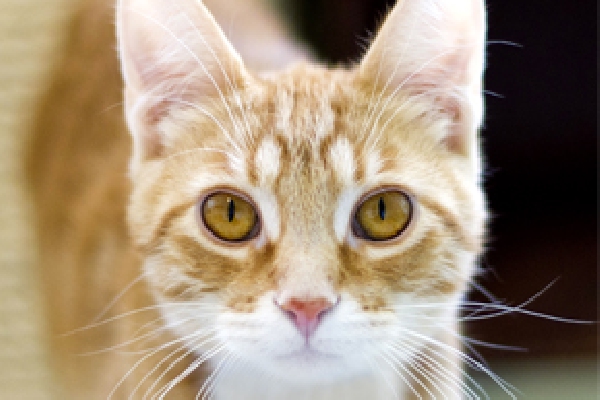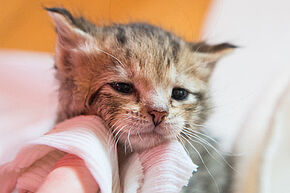Food Safety
Microchipping
A microchip is a tiny chip about the size of a grain of rice that is injected under your cat’s skin between the shoulder blades near the base of the neck. It never needs to be replaced and will remain active for the lifetime of your cat. The chip has no battery and emits no signal; it simply has a unique identification code.
After adopting your cat, be sure to update your contact information with the company that manufactures your cat’s microchip. Should your cat become lost, a quick wave of a microchip wand reads the identification number assigned to your cat so he can be reunited with you.
At PAWS Chicago, all adopted cats are implanted with an AVID microchip and come with a pre-paid registration form.
Secured Traveling
For safety, always use a cat carrier when transporting your cat. Put your cat’s favorite blanket or something with his scent inside the carrier to comfort him. To get your cat accustomed to the carrier, leave it open on the floor at home and put his toys or treats in it. Let him discover it on his own. Carriers should be secured and kept in the back seat. The seatbelt or shoulder belt should always be put through the top handle of the carrier.
Cat-Proofing Your Home
Ensuring your home is safe for your new cat is easy and just takes a few simple steps.
Familiarize yourself with Common Dangerous/Poisonous Household Items, such as poisonous plants, plastic bags, ribbon, string, twine, yarn, certain foods and chemical cleaners. Check the labels on all products that your cat could potentially get into. Avoid any products that contain phenols, such as Lysol.
The ASPCA Poison Control Hotline (888-426-4435) can provide additional information about household chemicals and plants that can be harmful to your pets.
Falling
A fast-working nervous system and flexible spine enable a cat to right itself to a feet-first position before falling 24 inches. Spongy paw pads cushion the landing. In falls from fairly high spaces, the cat will extend his spine and stretch out his limbs in a sort of “flying squirrel” position that slows his speed.
But this doesn’t mean they’re infallible. Cats become victims of what is called High-Rise Syndrome and severe injuries due to falls caused by:
- Muscle twitches and dreaming associated with REM sleep that can result in enough movement and disorientation to knock a cat off a ledge
- An intense prey drive that might drive a cat out of a window without considering the consequences of their actions
- Fleeing in fear
Make sure screens are securely fastened to windows and can withstand your cat’s weight. Be sure you have screens on the doors to your balconies or backyards, and make sure your cat cannot fit through your balcony or jump on the ledge.


